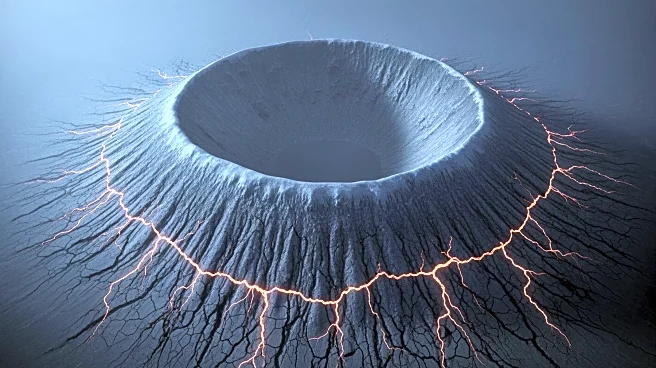What's Happening?
A study led by Xing Tan from Stanford University has mapped over 54,000 earthquakes at Italy's Campi Flegrei volcano since 2022, uncovering a ring fault beneath the caldera. This circular fracture outlines
a collapsed volcanic basin and channels stress, influencing earthquake locations. The discovery reshapes scientific understanding of the volcano's structure, providing a precise outline of stress zones previously invisible. The study utilized machine learning for seismic monitoring, enhancing the ability to detect subtle shifts and locate small earthquakes with greater accuracy.
Why It's Important?
The identification of the ring fault at Campi Flegrei is significant for earthquake risk assessment in the region. The caldera, located near Naples, poses a threat to urban areas built across its floor and rim. Understanding the fault's structure allows scientists to better predict potential earthquake activity, which is crucial for public safety and infrastructure planning. The study's findings could lead to improved emergency response strategies and inform building codes to mitigate damage from future seismic events.
What's Next?
Italy's Civil Protection maintains an emergency plan for the Campi Flegrei area, dividing it into zones for eruption and ash hazards. The new map of the ring fault will aid in refining these plans, ensuring quicker and more effective responses to seismic activity. Researchers will continue monitoring the caldera's uplift and seismic activity, using the enhanced AI system to provide real-time data. This ongoing research will help anticipate future bursts of shaking and guide local officials in implementing safety measures.













